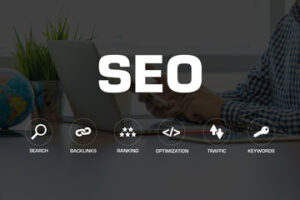Web Design The Woodlands are arts and sciences that blend aesthetics, functionality and user experience to create engaging websites. Web Designers use hypertext markup language (HTML) and cascading style sheets (CSS) to design web pages.

Adaptive Web Design takes into account the screen size of many different devices and changes the layout of the website accordingly. This provides a better User Experience as the information is tailored to the device.
Whether your customers are purchasing products or seeking information, you need to make it as easy as possible for them. That’s where user experience (UX) comes in. This design practice puts users in the driver’s seat and takes into account their needs, motivations, and goals to create a product that will satisfy them.
For web design, this means ensuring that navigation is simple and intuitive. Most sites use menus, bars, breadcrumbs, and sliders to provide a clear path for visitors to get where they’re going on the site. It also means making sure that all content is easily accessible, regardless of device or screen size.
The principles of UX are rooted in psychology and the human mind. They take into account things like Fitt’s law, which states that the time required to move a cursor or mouse to an area on a screen depends on its size and inversely on its distance from the viewer. This allows designers to determine how much space is needed between elements to avoid clutter and confusion.
Web designers need to be aware of user needs and up to date with web accessibility guidelines. This includes knowing about progressive enhancement, which is the principle of allowing all users to access the basic content of a page before adding more advanced features.
Navigation
There’s a lot of talk in UX design circles about making the navigation of your product so smooth that users don’t even realize they’re using it. Sadly, we’re still light years away from that, so we need to focus on how to make it easier for people to navigate our sites.
Website navigation is important for two reasons: 1) it provides a streamlined user experience; and 2) it’s critical for search engine optimization (SEO). Clear, easy-to-use navigation is one of the most effective ways to improve your site’s SEO.
The type of navigation you use depends on the needs and goals of your site. Some websites have in-depth footer menus, whereas others keep their navigation simple and focused on the most important pages.
No matter what type of navigation you choose, it’s essential to use consistent labels and group related items together to reduce clutter. Also, be sure to test your navigation with real users and keep improving it based on their feedback.
Layout
A website layout defines the way information is arranged on a page and determines its visual hierarchy. It should support the content and encourage users to explore it. Moreover, it should be flexible enough to fit various screen sizes and resolutions. The layout should also be easy to read and navigate.
Different websites have different needs, so a website should be designed with its specific goals in mind. For instance, a business site will require a clear focus on its products and services. This will help its visitors understand the company’s values and vision, which are essential for making a purchase decision.
Despite the wide variety of web design techniques and trends, there are some fundamental principles that should be adhered to. A well-designed layout should be able to attract visitors, increase conversion rates, and boost the brand’s image. The layout should be based on research and usability standards, and it should have a simple skeleton to make it easier to scale up in the future. This will ensure the success of a website’s marketing campaigns and help build a strong customer base. It should also meet the latest requirements and standards. Popular and time-proven website layout types include the F-shape layout, which reflects visitors’ habit of scanning web pages in an F pattern, and the Z-pattern layout, which arranges content in a zig-zag direction.
Colors
Web Design is a visual medium, and colors convey meaning and emotion, often at a subconscious level. When used intentionally, colors can help a website resonate with its audience and communicate a clear message.
A well-selected color palette establishes harmony and balance in a website, contributing to a pleasant User Experience. The right colors also foster brand recognition and create a sense of familiarity, evoking emotions and establishing trust.
To build an effective color scheme, start with a dominant primary color that embodies your brand’s essence and the overall ambiance you want to project. Then, curate a set of secondary colors that harmonize with your primary color and complement one another. Incorporate warm and cool tones to infuse your palette with dimension and diversity.
The 60-30-10 rule provides a blueprint for color distribution, suggesting that 60% of your palette should consist of the dominant color, 30% of a secondary color, and 10% of an accent color. This ratio ensures that the dominant color sets the mood, the secondary color bolsters contrast, and the accent color attracts attention and promotes engagement. In addition, it ensures that your website meets Web Content Accessibility Guidelines standards for accessibility and legibility.
Typography
Typography is the text on a website, including font selection, size, style and color. It’s a major component of web design that can impact user experience, engagement and conversion rates. It can also set the tone for a brand or business and reinforce its personality.
The best typography combines readability with aesthetics. It uses appropriate font size, white space and letter spacing to establish clear visual hierarchy and balance. It also incorporates serif and sans-serif styles for contrast, and often includes a mix of fonts to create a harmonious whole.
Some fonts have a specialized feature called kerning that helps them read more easily by reducing the distance between specific pairs of letters. This is especially helpful for long blocks of text. Some designers use fringe fonts like graffiti or bubble to add a fun, energetic feel to their designs. But these fonts should be used sparingly because they can present accessibility challenges.
Typography is also affected by factors such as screen resolution and brightness settings. As a result, it’s important to conduct A/B testing and track user behavior to understand how different typographic choices affect user experiences across devices.
White Space
Anyone who’s left an end-of-semester essay until the night before it’s due knows the terror that is a blank page. But white space, a key web design element that can help businesses revamp their products and services, doesn’t have to be nerve-wracking.
White space refers to the blank areas around text and images on a website. It covers everything from the space between lines of text to the margins on a page. It can be any color, not just white, and it plays a crucial role in directing the eye of a user through site content and avoiding visual clutter.
Think of it like the glue that holds a mosaic together or the silence in music; it’s an active element that helps shape the flow of a design and create clarity. White space makes elements stand out, banishing visual clutter and allowing them to breathe. Airbnb’s website utilizes copious white space to showcase their products and services in an engaging and effective way, while also guiding users through the different sections of the website easily. The same is true of Chanel’s website, which uses negative space to create an elegant and worldly feel. The clean, white space also helps emphasize the brand’s luxurious offerings.
Functionality
Web Design is the process of creating websites that are functional and user-friendly. It involves a number of different aspects, including visual design, user interface (UI) design, and site navigation. Additionally, it often includes writing markup (e.g., HTML and CSS). The functional aspect of Web Design is critical to a website’s success. It ensures that visitors can navigate a website easily and find the information they are looking for.
In addition to ensuring that a website’s navigation is intuitive, Web Design also includes the use of visual elements to create an aesthetically pleasing appearance. This can be achieved through the use of color, fonts, and images. It also includes the use of the principle of emphasis, which refers to the process of highlighting important aspects of a web page’s composition through the use of color, size, and animation.
Lastly, Web Design also includes the use of search engine optimization (SEO) techniques to improve a website’s visibility on search engines. This can be accomplished by using relevant keywords, incorporating proper meta tags, and creating fast-loading pages. Additionally, it involves the use of responsive and adaptive designs to accommodate various devices and screen sizes. It is also common for Web Designers to collaborate with other professionals, such as web developers and SEO experts, to ensure that their designs meet both technical and marketing requirements.
